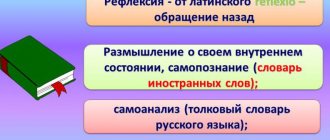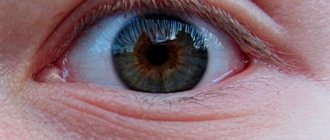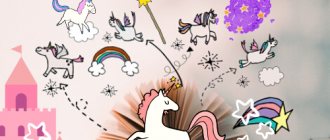For most people, a fairy tale remains one of the best childhood memories for the rest of their lives. This is an exciting story with magic and specific characters, which always ends with the victory of good over evil. But few people know that recently this folklore genre has been actively used in psychology and pedagogy as an integral element of a correctional course. In 1997, a new direction in this area was officially registered - fairy tale therapy, which today is actively developing and showing good results.
What it is
In psychology, there is a direction of art therapy, based on the use of art and creativity as correctional techniques, since they have a powerful effect on the psycho-emotional state of patients. She is proficient in various techniques: bibliotherapy, music therapy, drama therapy, dance therapy, puppet therapy, clay therapy, and fairy tale therapy.
Fairytale therapy is a psychological impact on a person through fairy tales. Promotes the development of a positive and multifaceted personality, helps correct some problems, eliminate fears and internal complexes.
It is based on the process of building mental, sometimes even unconscious connections between the characters, plot and actions in a fairy tale and what happens in reality. This is a kind of hint on how to do the right thing, which path to choose and evaluate yourself from the outside. Has no age restrictions. Children are subject to the greatest influence, but when working with adults, sometimes more profound results are discovered.
In psychology, this is, first of all, one of the many tools that allows an individual to understand the tangle of his own problems and find the right solutions in a difficult situation. This is where fairy tale therapy is a method that is often used to work with adults.
Why do men, even at an advanced age, call their women princesses, and the latter spend their entire lives looking for their prince on a white horse? Psychologists believe that mythologized standard images from fairy tales are triggered. If used correctly, they help solve the most complex and confusing psychological problems.
In pedagogy, this is a method that allows you to correct the development of a child’s personality and direct him in the right direction. It is believed that without this genre, children develop incorrect life values and priorities. To improve your inner self, it is imperative to draw a line between good and evil. And the easiest way to do this is with the help of fairy tale therapy.
It acquires particular significance in early preschool age, when all these images fall on the subcortex of the child’s consciousness. If they are carefully selected by specialists, in the future such children will have much fewer problems with socialization and determining their place in life.
To work with patients, the texts of new fairy tales are most often used, specially designed to eliminate a particular problem, aimed at a certain age. They are usually patented in numerous copyright schools. However, some experts also use the well-known stories of “Turnip”, “Teremka”, “Ryaba Hen”, although this approach is actively criticized and does not always find support.
What problems can be solved with fairy tale therapy?
Fairy tale therapy is one of the best methods of gentle influence on a child who has problems with development and upbringing. The most common of them include:
- capriciousness, pickiness, refusal to eat, sleep, and water procedures;
- sloppiness, sloppiness, refusal to maintain cleanliness and order in one’s things;
- aggressiveness, bad attitude towards other children;
- shyness, self-doubt, timidity.
Goals
Depending on the science in which fairy tale therapy is used and for what age the person is, it can pursue different goals.
In psychology:
- eradication of fears;
- impact on personality through unconscious associations;
- activation of mental defense mechanisms;
- assistance in choosing the right solution;
- programming a person’s life plan for the future;
- the fight against complexes and personality disorders, even such serious ones as anorexia, bulimia and suicidal tendencies.
In pedagogy:
- as a method of psychological correction of deviant behavior in adolescents for the formation of correct values;
- eliminating childhood problems such as phobias and self-doubt;
- character correction;
- improvement of internal state;
- instilling correct social stereotypes using the example of positive fairy-tale characters;
- building “morally correct” behavior;
- development of creative abilities;
- increased low self-esteem;
- developing a belief in positive problem solving.
In addition, fairy tale therapy is even used in speech therapy (speech development classes). It is believed that it helps to develop and improve in preschoolers:
- sound and semantic speech;
- phonemic awareness;
- articulation;
- differentiation of sounds, their introduction into speech;
- syllabic structure of words;
- sentence structure;
- the ability to formulate coherent statements (common sentences, dialogic speech, retelling).
When using it as a means of shaping speech development, children are given approximately the following tasks:
- complete the proposed fairy tale;
- come up with and tell your story from start to finish;
- repeat after fairy-tale characters some sounds, words or whole sentences;
- depict the sounds of nature.
In any of the cases described above, the goal of fairy tale therapy is the formation of the correct image (moral, verbal, behavioral) in accordance with the plot and characters of the chosen story.
Areas of fairy tale therapy
There are several areas of fairy tale therapy:
- exit from various life situations through the choice of behavior of the hero of a fairy tale, which leads to various consequences;
- identifying and solving the child’s problem in a form accessible to him;
- transfer of life experience and worldly wisdom through the plot of a fairy tale;
- development of thinking, imagination and memory during the discussion of the work and analysis of the actions and characters of the characters;
- adjusting behavior by relating oneself to the main character, identifying his negative actions and personality traits;
- psychoprophylaxis of possible problems.
Principles
The entire technology of fairy tale therapy is based on 4 basic principles.
Principle 1. Values
The main thing is to convey to a person’s consciousness information about the correct life values that he should be guided by in any situation when making decisions. After reading the fairy tale, you should definitely discuss such of them as mutual assistance, love, friendship, compassion, truth, faith, dignity, humanity, kindness.
Principle 2. Life force
After a person has mastered the basic values, work is done to realize that any action requires inner strength. Everyone has it, but for most it’s like a door blocked with stones (problems, doubts, disappointments, psychological traumas). You can understand that love, faith, hope are the stronghold of existence, but at the same time do nothing to ensure that they enter life. The fairytale therapist helps the patient realize his own inner strength and free himself from such blockages.
Principle 3. Versatility
The psychologist sorts out each fairy tale, covering the plot and characters from different positions. This is done so that a person understands that one cannot see only bad things in the world. Any event can be viewed from different angles and positive aspects can be found in it.
Principle 4. Two realities
Fairy tale therapy creates two realities in a person’s mind: fairy-tale (mental) and everyday (social). The specialist’s task is to weave the resources of the former into the patient’s life practice through associations.
My advice to parents
- It is better for an adult to tell a fairy tale rather than read it. Then it will be possible to monitor the child’s reactions.
- The child should be able to choose a fairy tale to read. If one interests him more than others, then he finds something important for himself in it.
- Do not use a moralizing tone when discussing a fairy tale; the child himself must take for himself the meaning that is accessible to him.
- It is undesirable to make changes to fairy tales related to modern reality. This can make it difficult to immerse yourself in the magical world.
- Let your child imagine and do it together. The resulting tale can tell a lot about his inner world.
Methods
The following methods are used to implement these principles.
- Story
First, the psychologist tells the story. After some time, he asks his interlocutor to retell to him what he remembered. Those moments that he will describe more vividly and in detail will make it possible to understand what painful accentuations and patterns he has.
- Illustration
Typically used with children, although sometimes also for adults. After reading a fairy tale, the psychologist asks to draw an illustration for it. Either arbitrarily, or some specific event (which was woven in specifically to reveal the patient’s internal problems), or a character. Here the choice of plot, hero, shades, dynamics of the depicted is assessed. If the good prince is drawn schematically and not at all brightly, and Koschey is drawn in the smallest detail and in the center of the picture, a shift in value guidelines will be obvious.
- Fairytale therapeutic diagnostics
One of the most complex methods most often used in working with adults. The psychologist offers unexpected questions on seemingly completely simple subjects. If we take well-known Russian folk tales, we can give the following example.
If a person whose family is collapsing due to housing problems (young spouses are forced to live with their parents and are constantly in conflict with them) turned to a psychologist. Reading "Teremok". Positive moments are mentioned (how completely different animals found shelter in a small tower in a large forest and got along together). During the analysis, an analogy with a hostel is drawn. Why were animals able to find a common language with each other in a fairy tale, but people sometimes cannot do this?
There are other methods - composing your own fairy tale (the points on which the emphasis is placed are taken into account, as well as the ending), a puppet workshop (similar to drawing), a theatrical performance, or at least role-playing (here the psychologist looks at what character the person has tried on). , how he justified his choice, how he played).
Examples of fairy tales
Fairytale therapy uses fairy tales for children that are suitable for the age and goals of the child. It’s even better if it’s not a ready-made fairy tale, but one invented during therapy.
For children of preschool and primary school age, you should choose works that have a clear storyline:
- household (“Porridge from an axe”, “Kolobok”, “Ryaba Chicken”, etc.);
- magical (“Puss in Boots”, “Morozko”, “Crystal Mountain”, etc.);
- instructive (“Fedya’s toys”, “Golden Fish”, “Fedorino’s grief”, “The Man and the Bear”, etc.);
- heroic (“Sivka-Burka”, “Ilya Muromets”, etc.).
Important points to pay attention to when choosing or inventing a fairy tale:
- The child should be interested in heroes; peers or animals are best.
- The characters should have clearly expressed positive or negative qualities - only in this way will the child be able to analyze their character and actions.
- The theme of the fairy tale must be relevant. It needs to be selected for the present moment in order to solve children’s problems (fears, shyness, aggression, etc.) in a timely manner.
- The work must end with a denouement so that the child knows specifically what to do or not to do.
Lesson structure
A fairytale therapy session usually follows the following sequence:
- Immersion in the activity. This can be any ritual that will help you catch the necessary mood (listening to music, looking at a picture, etc.).
- Reading text. It is better if the text is read by an adult, but listening to an audio recording of the speaker is also acceptable.
- Conversation about what you heard. At this stage, the actions of the characters, their connection with current events, as well as the feelings and emotions that the fairy tale evoked are discussed with the child.
- Art therapeutic techniques. Reflection of heroes and the fairy-tale world in a favorite activity (drawing, playing in the sand, dramatizing, etc.).
- Exit from the fairy tale. Another ritual that symbolizes a return to reality.
- Results of the lesson. A conversation about what the child learned from the lesson and how it will be useful to him in life.
It is acceptable that if not all elements of the lesson structure are used, some of them can be skipped or swapped.
Psychological schools
Despite the fact that fairy tale therapy as a separate direction in psychology took shape only in 1997, already before that the influence of this genre on personality development was considered in various psychological schools.
Carl Jung
Swiss psychiatrist, psychologist, teacher. School of Analytical Psychology. He proved that in his behavior and when making responsible decisions, a person often acts unconsciously (he cannot explain why he did what he did), but is guided by mythologies and archetypes from fairy tales.
As a child, the boy was constantly read the same fairy tale - about Rapunzel. And in the future, he chose women only with long hair. The child grew up reading scary fairy tales and subsequently began to get involved in extreme sports in order to experience the feeling of fear and a surge of adrenaline again and again.
Eric Bern
American psychologist, psychiatrist. School of transactional and scenario analysis. He developed his own fairy tales, calling them counter-scenarios. They acted as follows. Bern believed that every person is programmed from childhood to follow a typical path, and rarely does anyone manage to turn off it on their own. For some, this path is positive, leading to success (mentally and morally healthy people), while for others it is negative (under the influence of psychological trauma, internal complexes).
For example, for a girl, all the guys she started dating ended up abusing alcohol. All because her father drank and thus seemed to program his daughter’s life path for such a fate. Byrne used fairy tales to show his patients a possible alternative to the development of events.
D. B. Elkonin
Soviet psychologist who worked in the field of child and educational psychology. The theory of activity approach. He selected fairy tales for problem children in such a way that they could form in them “morally correct” behavior that would fit into the framework of society. So that a child does not leave home and obeys his parents - read “Kolobok”, so that he understands the success of collective work and mutual assistance - “Turnip”, and is kind and sincere - “Morozko”.
Kinds
Different types of fairy tales are used for correction.
- Artistic
Folklore, national, most often known to everyone. Versatile. If played correctly, they can be adapted by a specialist to literally any person. For example, “The Tale of the Fisherman and the Fish” is used to correct the abnormal behavior of a spoiled child who does not yet understand what unbridled desires can lead to. The same work is used in fairy tale therapy for those adults whose financial problems are ruining their family life, for henpecked men and wives who cannot stop making demands. However, such fairy tales are not applicable to solving deep problems.
- Psychocorrectional
They are used in pedagogy to correct a certain character trait: cowardice, laziness, capriciousness, aggressiveness. They differ from artistic ones in that they are developed and selected for a specific person.
- Psychotherapeutic
The main tool for fairy tale therapy for preschoolers. They are used for a multifaceted impact on the personality of a problem child in order to eliminate phobias and smooth out the consequences of traumatic factors. They can be universal (for example, to combat the fear of darkness or thunderstorms) and individual, designed for a specific case.
- Meditative
Sometimes a person does not have pronounced negative character traits, complexes or phobias. At the same time, values and priorities are formed correctly. However, problems with social adaptation constantly arise; he cannot overcome his depressive state. This happens in both children and adults. To understand the reason for what is happening, the psychologist selects this type of fairy tale. There are no conflicts or evil in them. They are philosophical, aimed at relaxation, within the framework of which it is possible to reveal what oppresses the patient.
- Didactic
They are part of the educational program in kindergartens and schools. In addition to identifying and solving psychological problems, they are aimed at the comprehensive development of the child. Can perform several tasks at once.
To date, dozens of original fairy tale therapy programs have been developed - for children, adolescents, and adults. Not only psychologists use them in their work. They help work in schools, kindergartens, rehabilitation centers for the disabled and children with deviant behavior, correctional institutions, and universities. The most famous are Sakovich and Lisinoy.
The program of doctor-psychologist Zinkevich-Evstigneeva called complex fairy tale therapy has become especially widespread. It was patented in 1998. Provides rapid, long-term and deep psychological assistance to children, adolescents and adults. Today, Complex Fairytale Therapy Centers are open and successfully operating in the UK, Estonia, Germany, Switzerland, and China.
Fairytale therapy techniques
Working with fairy tales leaves a wide choice of combinations with other forms of therapy. This helps to increase children’s interest and evoke a stable positive attitude towards such activities.
- Sand therapy. Interacting with sand not only gives a relaxing effect, but also helps to recreate your own fairy-tale “sand” world. This practice allows the child to completely immerse himself in the plot and intuitively find a way out of a difficult situation.
- Drawing. The child creates his own world with the help of pencils and paints, which helps to recognize emotions about the text he hears. This technique also promotes children's creative self-expression. You can invite them to continue the fairy tale on a piece of paper or come up with an alternative ending.
- Staging. Playing a role in a fairy tale gives the child the opportunity to gain emotional experience and gain a deeper understanding of the character. But it is important to leave the child room for improvisation - this form of therapy will allow you to see your own shortcomings and problems using the example of a fairy tale hero.
- Puppet shows. Sometimes it’s difficult to play a role yourself, and then dolls come to the rescue. A child can assign any qualities to his character and observe from the outside what different behavior options can lead to. The process of making dolls and playing have a relaxing effect.
- "Master of Fairy Tales" This is the author’s technique of fairy tale therapy, which is carried out with a deck of special cards. T.D. Zinkevich-Evstigneeva believes that there are 10 archetypes (road, state, crossroads, etc.), the combination of which allows you to create 50 different fairy-tale plots. The child independently comes up with his own story based on the chosen card.
Age characteristics
For preschoolers
Fairytale therapy for preschool children is an obligatory part of the educational process in kindergarten. It teaches you to differentiate between good and evil and forms correct values.
For children 2-3 years old
Fairy tales for fairytale therapy help them adapt to kindergarten, wean themselves from the constant presence of their parents, relieve emotional and muscle tension, and reduce feelings of fear and anxiety. Along the way, they are aimed at developing speech, attention, imagination and perception. An example of a fairy tale is “How the little elephant Styopka went to kindergarten.”
For children 3-4 years old
The goal of fairy tale therapy at this age is to develop the skills of full communication with others through improving speech and the ability to negotiate with peers and adults. Children learn to listen, retell, and most importantly - empathize with the characters, distinguish the bad from the good. Here you can use the famous fairy tales “Geese and Swans”, “Kolobok”, “Turnip”.
For children 5-6 years old
At this age, the first complexes and fears begin to form. The task of fairy tale therapy is to cope with them. Along the way, fairy tales relax, allow the child to realize that he is not alone in experiencing such problems, and most importantly, they are all surmountable. An example of a fairy tale: “About Darkness-Darkness.”
For younger students
Fairytale therapy for children 6-7 years old solves more global problems. Firstly, we need to help adapt to the new conditions of existence within the school walls. Secondly, in a more playful form that is closer to children, continue to develop memory, speech, attention, and imagination. Thirdly, teach goal setting. At the initial stage of education, all this is still relevant: children listen with interest to the author’s, unfamiliar fairy tales and are open to their perception.
School psychologists must include fairy tale therapy in their work with primary school students. Moreover, the work can be both collective (give everyone the task of composing a fairy tale) and individual (with difficult children characterized by deviant behavior or poorly adapting to new conditions).
In the future, for middle school students, fairy tale therapy is used less and less as a group work. There, psychologists begin to select texts in accordance with the problem and personality of each individual child.
For teenagers
Adolescence is one of the most difficult and unpredictable periods when children try to find and find themselves. Suicides, anorexia, informal groups, illegal substances, deviant behavior - fairytale therapy will help to cope with all this. At this stage, it contributes to the development of self-interest, stimulation of creative self-expression and reflection.
If teenagers do not want to listen to a fairy tale, it is not necessary to insist on this term. Call the text a parable or an interesting story. Examples: “Flamingo, or the Rock of Wishes” (overcoming insecurity), “The Tale of True Color” (getting rid of suicidal thoughts), “Cheek” (fighting low self-esteem).
As for fairy tale therapy for adults, in this area exclusively individual work is carried out with a narrowly focused specialist.
Recommended books
- Gnezdilov A. V. Author's fairy tale therapy.
- Zinkevich-Evstigneeva T. D. Workshop on fairy tale therapy.
- Kozlova E. G. Fairy tales and tips. Problems for a math club.
- Lomakina G. Fairy tale therapy.
- Prokhorov V., Rubanova S., Otradnova A. The healing power of fairy tales.
- Sakovich N. A. Practice of fairy tale therapy.
- Sokolov D. Fairy tales and fairy tale therapy.
- Stishenko I.V. Fairytale therapy for solving personal problems.
- Tkach R. M. Fairytale therapy for children's problems.
- Tkacheva T. Psychotherapeutic fairy tales for adults and children.
In the above books you can find examples of fairy tales and methodological recommendations on how best to use them in working with adults and children. Despite the fact that not all psychologists share the enthusiasm for the effectiveness of this trend, it is incredibly popular all over the world and over 20 years has helped tens of thousands of people find harmony in their souls and get rid of phobias.
Functions of fairy tale therapy
Fairytale therapy is a tool for influencing a child that even parents can use. Its use can help get rid of childhood phobias, figure out what is “good” and what is “bad,” and help overcome difficulties in life.
The functions of fairy tale therapy include the following:
- quickly establishing contact with the child;
- identifying mental problems that are hidden in the subconscious;
- consideration of various behavior options using the example of a fairy tale hero;
- assistance in understanding one’s own feelings, emotions and contradictions in behavior;
- finding out information that the child deliberately does not disclose.











